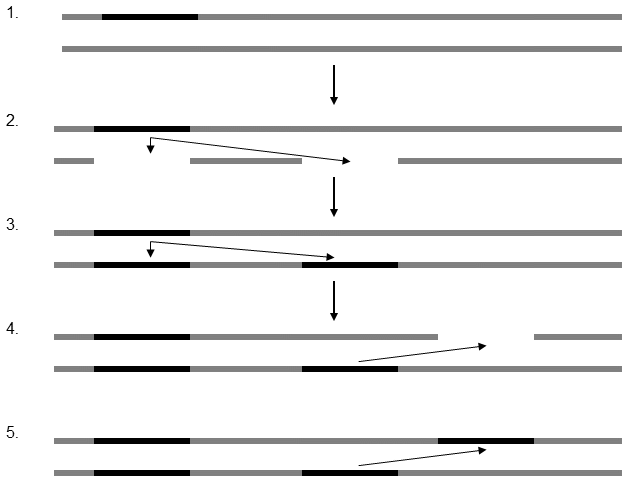I.8 Natural selection is based on unequal transfer of alleles from particular individuals to the gene pool of the next generations
Living organisms are capable of reproduction. The reproduction capability of some species is enormous; an individual or, for sexually reproducing species, a pair of individuals is even capable of producing millions of descendants in a lifetime. The reproduction ability is not so great in other species; however, there is always a growth constant, a slope of the growth straight line that is greater than one. This means that, during its lifetime, an average individual produces more than one progeny. If the process of reproduction occurs with a slope of greater than one, the number of individuals should increase exponentially over time. However, it is known from experience that this does not happen. In the long term, the sizes of the populations of individual species remain roughly unchanged over time. This means that excessive individuals, amongst rapidly reproducing organisms the vast majority of progeny, are eliminated from the population before being capable of reproduction.
Which individuals gain the chance to reproduce and which do not is always to a certain degree a matter of accident, but is not entirely accidental. Depending on their individual traits, which are to a high degree hereditary, the chances of the individual organisms are not identical. Individuals that are better able to obtain nutrition from the environment, of better utilizing it to build their bodies or for production of embryos or that are better able to resist pressure from enemies, predators and parasites have a substantially better chance of leaving descendents behind them and thus of adding a greater percent of their genes to the gene pool of the next generation than their less lucky competitors. This leads over time to a gradual and systematic shift in the frequency of the occurrence of certain variants of the individual genes (alleles) in the gene pool of each species. The species develops and gradually acquires those properties that ensure their bearers a greater chance of successful reproduction. These are the properties that are termed adaptive, useful. The process that leads to the formation of adaptive traits through uneven transfer of alleles derived from particular individuals to the gene pool of the following generations through progeny is termed natural selection (see Chap. II).

Fig. I.13 Multiplication of transposons by gene conversion. Most transposons multiply by insertion of their new copies into new sites in the DNA chain. Similar to some short sequence motifs, some transposons can also multiply by repairing sequences at other sites in the DNA according to their own sequence. The total amount of DNA remains unchanged during such a process, but the relevant sequence motif multiplies.
